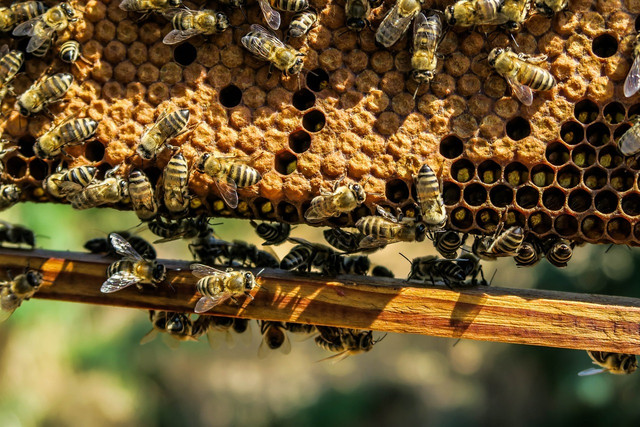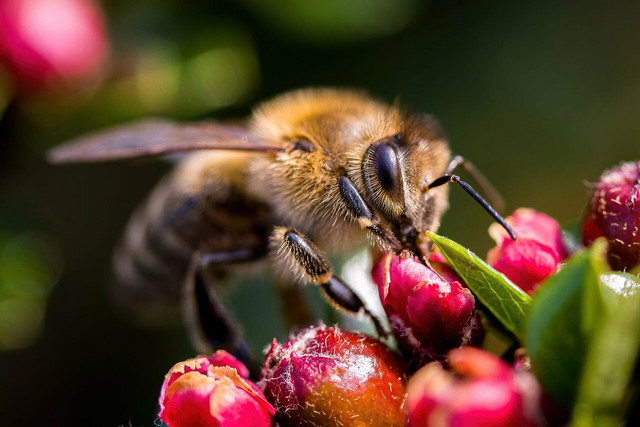If you see them buzzing around during early spring and summer, you may wonder what bees eat. As it turns out, bees are quite self-sufficient when it comes to food.
Altogether, there are an estimated 20,000 bee species across the globe, and you can often spot them around the spring and summer months. Their job is simple yet vital for our ecosystem. Bees are responsible for pollinating flowers and plants, and they, therefore, help produce much of the food that we see on our plates.
However, while bees often pollinate our flowers, you may wonder what they eat. After all, many of us only see them traveling from plant to plant. Do bees eat honey? Do they eat other insects? It’s a question you may have asked yourself many times before. We’ll dive deeper into the fascinating diet of a bee below.
What Do Bees Eat?

So, do bees eat honey? Surprisingly, yes — bees do eat their own honey. However, that’s not all they eat. Bees also eat pollen and nectar, which they find in various plants. The pollen acts as a primary source of amino acids for the bees, which are used to build protein and other essential nutrients that they need. While some species provide more amino acids than others, the bees take whatever tickles their fancy.
So what about nectar? The nectar bees collect provides them with a source of carbohydrates, which helps them to perform daily activities. However, in addition to using nectar and pollen for food, bees also transfer the pollen from plant to plant, helping to fertilize plants and crops in the process.
How to Support Bees



Bees are a vital part of our ecosystem and help to fertilize many crops and plants. Without them, we wouldn’t have access to much of the fresh produce that we eat every day. However, bee extinction is an ever-growing threat, and species such as the honeybee are becoming endangered due to climate change, depleting habitats, badly-managed beekeeping and harmful pesticides.
While some of these factors may be out of your personal control, there are many ways you can help support the bee population. Here are some ways to help out:
- Provide bee nesting areas in your garden to shelter them in winter
- Provide plenty of bee-friendly plants in your garden, such as foxgloves or honeysuckle
- Provide them with water
- Avoid using pesticides on your plants and flowers
- Avoid cutting dead flower stalks until spring, as they can act as bee habitats
- Avoid touching your compost heap until spring
Bees are incredibly important, so we all must play our role in supporting them.
Read more:
- 11 Flowers for Bees: Turn Your Garden or Balcony Into a Bee Paradise
- DIY Bee Waterer: How to Provide Water for Bees This Summer
- California Native Plants: Beautiful Bee-Friendly Options
Do you like this post?






